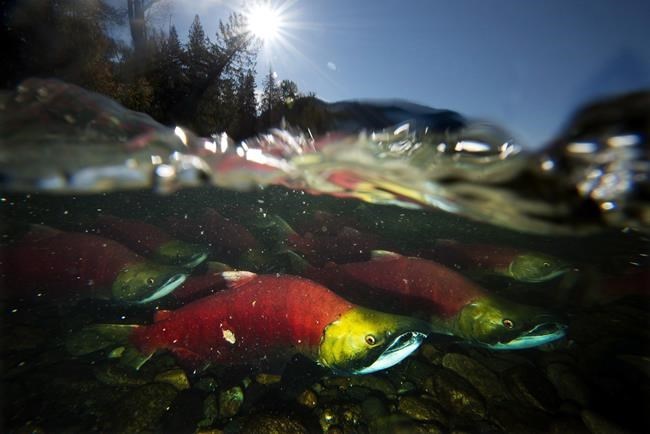VANCOUVER — The federal government says it will close several commercial Pacific salmon fisheries in British Columbia and Yukon beginning this season to conserve fish stocks that are on the "verge of collapse."
The Fisheries Department said in a news release Tuesday that 79 of 138 commercial and First Nations communal fisheries will be affected, which amounts to about 60 per cent.
Fisheries Minister Bernadette Jordan said these closures will reduce immediate pressure on fragile stocks that have drastically declined.
"We're seeing a decline in the stock runs, in some cases up to 90 per cent," she said in an interview.
"And, you know, we need to do everything we can to conserve the species."
The government's announcement follows plans for the distribution of nearly $650 million earmarked for the Pacific Salmon Strategy Initiative. The plan will guide work on conservation, better hatchery production, an overhaul of fish harvesting methods and improve the collaboration of fisheries management.
The closures are intended to increase the number of salmon reaching spawning areas, specifically sockeye, pink and chum stocks.
Watershed Watch Salmon Society, a conservation group, called the move a "bold, necessary and courageous step."
"I think it stops the bleeding," said Greg Taylor, the society's fisheries adviser.
"I think it's something that we have to start. We have to increase the number of fish returning to their spawning grounds. We don't have time."
Jordan said the decline in fish stocks is because of a number of factors, including climate change, habitat degradation and the massive Big Bar landslide in the Fraser River.
"I mean, it's not all about overfishing," she said.
"There is going to be no silver bullet that saves the salmon stock. It's got to be an all-hands-on-deck approach."
The United Fishermen & Allied Workers' Union said the closure of 79 salmon fisheries has left them "worried" about the future of commercial operations.
"Today's closure announcements are deeply concerning," Emily Orr, UFAWU-Unifor business agent, said in a statement.
"The abruptness of the announcement, and lack of transparency for how these specific closures were decided, have blindsided harvesters."
While a licence retirement program is needed, she said it is only one part of a multi-pronged approach that is required.
"We need habitat restoration and investments in hatcheries," she added.
Andrew Trites, director of the marine mammal research unit at the University of British Columbia, said the closure of commercial fisheries will make a "huge difference" for small runs of salmon that are struggling to survive.
Each river has its own population of salmon where some are OK while others are in "real trouble," he said.
"The problem is that when you're fishing, you don't know which river it's coming from," Trites said.
"And so you get strong runs mixed in with weak runs, and it has a much bigger effect on the small populations."
Data from the North Pacific Anadromous Fish Commission shows that the global catch of Pacific salmon in 2020 was the lowest since 1982.
But the measures announced Tuesday will not produce immediate results because fish stocks may need multiple generations to stabilize and rebuild, Jordan noted.
"We may not see actual increases in the stock for a number of years, before we actually see that these measures are working," she said.
"But we can't wait because they're at a point now where if we don't do something now, there will be no fishery to have for generations to come."
This report by The Canadian Press was first published June 29, 2021.
Hina Alam, The Canadian Press



